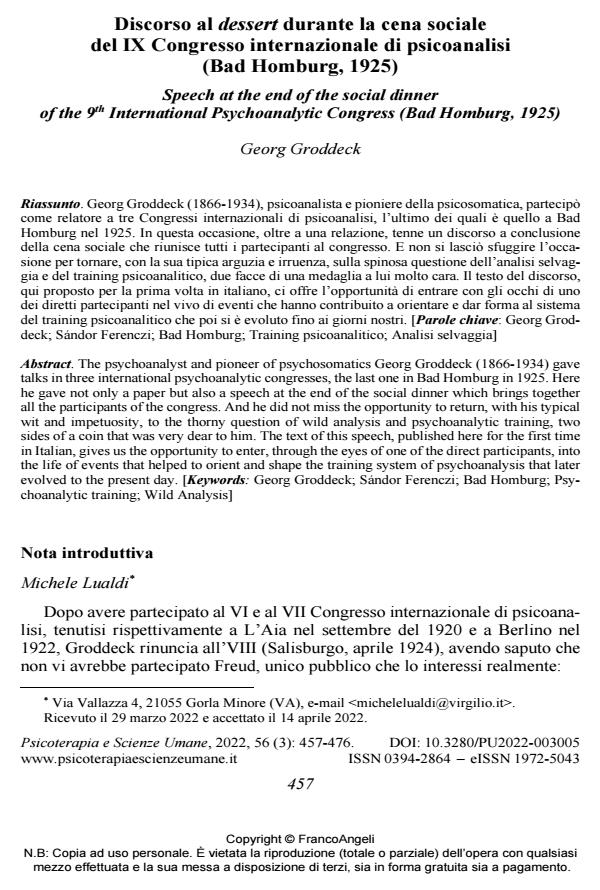Speech at the end of the social dinner of the 9th International Psychoanalytic Congress (Bad Homburg, 1925)
Journal title PSICOTERAPIA E SCIENZE UMANE
Author/s Georg Groddeck
Publishing Year 2022 Issue 2022/3
Language Italian Pages 20 P. 457-476 File size 112 KB
DOI 10.3280/PU2022-003005
DOI is like a bar code for intellectual property: to have more infomation
click here
Below, you can see the article first page
If you want to buy this article in PDF format, you can do it, following the instructions to buy download credits

FrancoAngeli is member of Publishers International Linking Association, Inc (PILA), a not-for-profit association which run the CrossRef service enabling links to and from online scholarly content.
The psychoanalyst and pioneer of psychosomatics Georg Groddeck (1866-1934) gave talks in three international psychoanalytic congresses, the last one in Bad Homburg in 1925. Here he gave not only a paper but also a speech at the end of the social dinner which brings together all the par-ticipants of the congress. And he did not miss the opportunity to return, with his typical wit and impetuosity, to the thorny question of wild analysis and psychoanalytic training, two sides of a coin that was very dear to him. The text of this speech, published here for the first time in Italian, gives us the opportunity to enter, through the eyes of one of the direct participants, into the life of events that helped to orient and shape the training system of psychoanalysis that later evolved to the present day.
Keywords: Georg Groddeck; Sándor Ferenczi; Bad Homburg; Psychoanalytic training; Wild Analysis
Georg Groddeck, Discorso al dessert durante la cena sociale del IX Congresso internazionale di psicoanalisi (Bad Homburg, 1925) in "PSICOTERAPIA E SCIENZE UMANE" 3/2022, pp 457-476, DOI: 10.3280/PU2022-003005